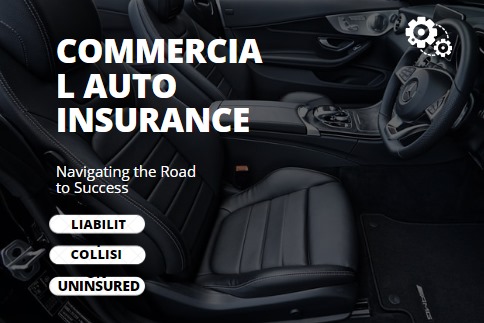Introduction:
In the realm of business operations, the importance of commercial auto insurance cannot be overstated. Whether you run a small business with a single delivery vehicle or manage a fleet of company cars, protecting your assets and mitigating risks on the road is paramount. In this blog post, we’ll delve into the intricacies of commercial auto insurance, exploring its significance, key features, and how it can safeguard your business against unforeseen challenges.
The Crucial Role of Commercial Auto Insurance:
Running a business often involves a fleet of vehicles essential for various operations, from transporting goods to meeting clients. Commercial auto insurance serves as a safety net, shielding your business from potential financial pitfalls in the event of accidents, theft, or damage to company vehicles. Understanding the nuances of commercial auto insurance is not only a legal necessity but a strategic decision that can safeguard your assets and ensure the continuity of your business operations.
Key Features of Commercial Auto Insurance:
- Liability Coverage:
- Protects against bodily injury or property damage claims that may arise from an accident involving a company vehicle.
- Comprehensive Coverage:
- Covers non-collision events such as theft, vandalism, or natural disasters, providing comprehensive protection for your fleet.
- Collision Coverage:
- Pays for repairs to your company vehicles in the event of a collision, ensuring your business can get back on the road promptly.
- Uninsured/Underinsured Motorist Coverage:
- Protects your business if one of your vehicles is involved in an accident with a driver who lacks sufficient insurance coverage.
- Medical Payments Coverage:
- Covers medical expenses for drivers and passengers in your company vehicles, regardless of fault in an accident.
- Hired and Non-Owned Auto Coverage:
- Extends coverage to vehicles your business rents or employees use for business purposes but do not own personally.
- Loading and Unloading Coverage:
- Protects against damage that may occur while goods are being loaded onto or unloaded from company vehicles.
- Electronic Equipment Coverage:
- Ensures coverage for electronic devices and equipment installed in your commercial vehicles.
- Towing and Labor Costs:
- Covers the expenses associated with towing and labor if a covered vehicle breaks down.
- Rental Reimbursement Coverage:
- Pays for the cost of renting a replacement vehicle while your company vehicle is being repaired after a covered accident.
Understanding Policy Limits and Deductibles:
When selecting commercial auto insurance, it’s crucial to understand policy limits and deductibles. Policy limits represent the maximum amount the insurance company will pay for a covered loss. Deductibles, on the other hand, are the out-of-pocket expenses the policyholder must pay before the insurance coverage kicks in. Striking the right balance between policy limits and deductibles is essential to ensure adequate coverage without compromising your budget.
The Cost Factor: Premiums and Factors Influencing Rates:
The cost of commercial auto insurance varies based on several factors. Insurance companies consider the size of your fleet, the type of vehicles, the driving history of your employees, the nature of your business operations, and the coverage options selected. Implementing risk management practices, such as driver safety programs and vehicle maintenance protocols, can positively impact insurance rates. It’s essential to work closely with an insurance agent to tailor coverage that meets your business needs while optimizing costs.
Table:
| Feature | Description |
|---|---|
| Liability Coverage | Protects against bodily injury or property damage claims arising from accidents involving company vehicles. |
| Comprehensive Coverage | Covers non-collision events like theft, vandalism, or natural disasters, providing comprehensive protection. |
| Collision Coverage | Pays for repairs to company vehicles in the event of a collision, ensuring a prompt return to business operations. |
| Uninsured/Underinsured Coverage | Protects against drivers without adequate insurance, ensuring your business is covered in the event of an accident. |
| Medical Payments Coverage | Covers medical expenses for drivers and passengers, regardless of fault in an accident involving a company vehicle. |
| Hired and Non-Owned Auto Coverage | Extends coverage to rented vehicles or those used by employees for business purposes but not owned personally. |
| Loading and Unloading Coverage | Protects against damage during the loading or unloading of goods from company vehicles. |
| Electronic Equipment Coverage | Ensures coverage for electronic devices and equipment installed in commercial vehicles. |
| Towing and Labor Costs | Covers expenses related to towing and labor in the event of a breakdown. |
| Rental Reimbursement Coverage | Pays for the cost of renting a replacement vehicle while a covered vehicle is being repaired after an accident. |
Conclusion:
Commercial auto insurance is not just a legal obligation; it is a strategic investment in the longevity and resilience of your business. By understanding the key features, policy limits, deductibles, and cost factors, you can make informed decisions that align with your business goals. Safeguarding your fleet with comprehensive coverage ensures that your business can navigate the roads to success with confidence, knowing that unforeseen challenges are met with financial protection and resilience.
